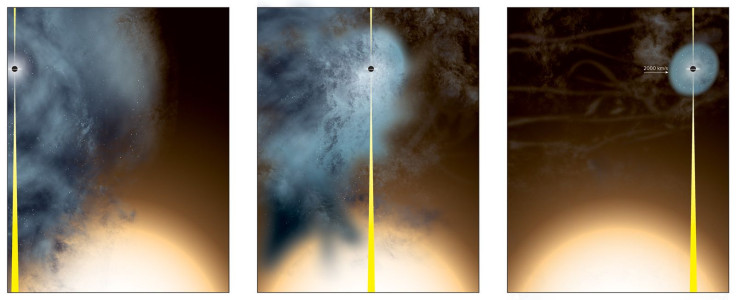Scientists Spy A ‘Nearly Naked’ Supermassive Black Hole In A Galaxy Cluster Far, Far Away

When galaxies collide, weird things happen.
A team of astronomers using the National Science Foundation's Very Long Baseline Array (VLBA) has now observed one such weirdness — an encounter between two galaxies that shredded the smaller one to its very core, leaving behind a “nearly naked” supermassive black hole.
This object, named B3 1715+425, was found in a cluster of galaxies over 2 billion light-years from Earth. Astronomers believe that it was created when a large galaxy collided with a smaller one millions of years ago — a phenomenon that stripped the latter of nearly all its stars and gas. What was left was a black hole surrounded by a small clump of ionized gas, debris and dust just 3,000 light-years across.
“We were looking for orbiting pairs of supermassive black holes, with one offset from the center of a galaxy, as telltale evidence of a previous galaxy merger. Instead, we found this black hole fleeing from the larger galaxy and leaving a trail of debris behind it,” U.S. National Radio Astronomy Observatory’s James Condon — the lead author of a study detailing the observations — said in a statement released Wednesday. “We've not seen anything like this before.”
The black hole surrounded by the small galactic remnant is currently speeding away from the core of the much larger galaxy, and will continue to lose more mass as it does so. The researchers estimate that in a billion years or so, it would become entirely invisible — a possibility that suggests that the universe may have many more such objects that have, over the eons, become undetectable.
“The data we get from the VLBA is very high quality. We get the positions of the supermassive black holes to extremely good precision. Our limiting factor is the precision of the galaxy positions seen at other wavelengths that we use for comparison,” Condon said, adding that in the coming years, new, more powerful optical telescopes may allow scientists to detect more objects like B3 1715+425.
© Copyright IBTimes 2024. All rights reserved.






















